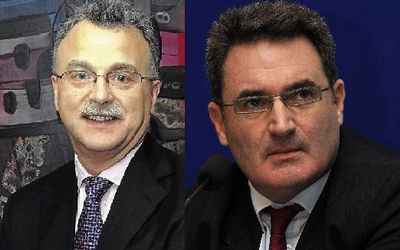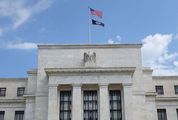WHEN Old Mutual CEO Bruce Hemphill presented his maiden set of financial results on Friday, he did something pretty unusual: he announced plans to get rid of the company that he took charge of only four months ago.
"I won’t have a role by 2018," he told journalists, as he explained Old Mutual’s plans to separate its four underlying businesses from each other in the next two to three years, after which Old Mutual’s £80m-a-year head office will no longer be required.
This reflects how financial services have changed since 1999, when Old Mutual demutualised, moving its head office to London and locating its primary listing there.
A big part of the rationale for the London listing was that Old Mutual needed to access a much larger pool of capital than was available in SA to fund its demutualisation, which saw it switch from ownership by policyholders to a listed company owned by shareholders. The group raised a large sum of capital, with pressure to spend on expansion. That it did, making some costly mistakes along the way.
The financial crisis not only showed up the fault lines in some of the group’s questionable investments, but also put question marks over financial conglomerates.
The concentration of risk across and within aspects of financial services — such as banking and insurance — led to the crisis. Regulators responded, globally and in SA, by trying to reduce that concentration, forcing those holding more risk to hold higher levels of capital, making it ever more costly to be complex.
Mr Hemphill’s predecessor, Julian Roberts, had done much to fix and streamline the group, which last week reported a strong performance in its underlying businesses, with strong cash flows and capital ratios. But its structure was unsustainable.
The "managed separation" plan emerged from a comprehensive, three-month strategic review in which Old Mutual and subsidiary Nedbank worked with regulators to explore about 30 different options.
It concluded that this was the right way to go, and the group will separate out Johannesburg-based Old Mutual Emerging Markets — which holds its insurance and wealth businesses in SA and Africa, as well as its controlling stake in Nedbank from listed Nedbank by 2018, listed US institutional asset manager Old Mutual Asset Management and the group’s unlisted UK wealth management business.
The regulatory burden was not the main driver.
The strategic review concluded that synergies between the four businesses were not sufficient to justify the costs of supporting the group structure.
Dismantling the structure means that the underlying businesses can be rated relative to their peers, removing the conglomerate discount, which some analysts estimate at as much as 20%.
The group has changed its dividend policy, paying out less than before in anticipation of the four businesses needing to be self-sufficient. That may disappoint investors, and some analysts are disappointed too at the dearth of detail about how the managed separation will be implemented.
Mr Hemphill emphasises that consultation with a wide range of stakeholders will be needed before the group can finalise the details. That includes the holders of Old Mutual’s debt, which it plans to reduce "materially", regulators in several countries and others.
For Nedbank, the announcement brought long-sought clarity about its ownership. Old Mutual will distribute the shares to shareholders, but will keep an "appropriate strategic minority stake" in Nedbank, which Mr Hemphill says will probably be 15%-20%.
Much work is still needed on how best to effect the distribution, with several options being considered. Unbundling shares to Old Mutual shareholders would create a significant overhang in Nedbank’s shares because of the number of Old Mutual shareholders who could not keep them, or would not want to. About 25% of Old Mutual’s shares are in the hands of index trackers that track the FTSE index, in which it is included. They will have to sell, as will funds with mandates requiring them to invest in FTSE or UK-domiciled stocks.
Fortunately perhaps, more than half of Old Mutual’s shares are in South African hands — which reflects some of the confusion that has weighed on the group’s value. Many domestic investors have probably been happy to hold the share for its rand-hedge qualities, as well as its exposure to SA Inc.
Mr Hemphill emphasised the plan is not about bringing Old Mutual home, but rather bringing value to shareholders.
The next few years will show whether, in returning its business units to more natural investors, the group can unlock the value it promises.

Julian Roberts and Bruce Hemphill. Picture: FINANCIAL MAIL, BUSINESS DAY
WHEN Old Mutual CEO Bruce Hemphill presented his maiden set of financial results on Friday, he did something pretty unusual: he announced plans to get rid of the company that he took charge of only four months ago.
"I won’t have a role by 2018," he told journalists, as he explained Old Mutual’s plans to separate its four underlying businesses from each other in the next two to three years, after which Old Mutual’s £80m-a-year head office will no longer be required.
This reflects how financial services have changed since 1999, when Old Mutual demutualised, moving its head office to London and locating its primary listing there.
A big part of the rationale for the London listing was that Old Mutual needed to access a much larger pool of capital than was available in SA to fund its demutualisation, which saw it switch from ownership by policyholders to a listed company owned by shareholders. The group raised a large sum of capital, with pressure to spend on expansion. That it did, making some costly mistakes along the way.
The financial crisis not only showed up the fault lines in some of the group’s questionable investments, but also put question marks over financial conglomerates.
The concentration of risk across and within aspects of financial services — such as banking and insurance — led to the crisis. Regulators responded, globally and in SA, by trying to reduce that concentration, forcing those holding more risk to hold higher levels of capital, making it ever more costly to be complex.
Mr Hemphill’s predecessor, Julian Roberts, had done much to fix and streamline the group, which last week reported a strong performance in its underlying businesses, with strong cash flows and capital ratios. But its structure was unsustainable.
The "managed separation" plan emerged from a comprehensive, three-month strategic review in which Old Mutual and subsidiary Nedbank worked with regulators to explore about 30 different options.
It concluded that this was the right way to go, and the group will separate out Johannesburg-based Old Mutual Emerging Markets — which holds its insurance and wealth businesses in SA and Africa, as well as its controlling stake in Nedbank from listed Nedbank by 2018, listed US institutional asset manager Old Mutual Asset Management and the group’s unlisted UK wealth management business.
The regulatory burden was not the main driver.
The strategic review concluded that synergies between the four businesses were not sufficient to justify the costs of supporting the group structure.
Dismantling the structure means that the underlying businesses can be rated relative to their peers, removing the conglomerate discount, which some analysts estimate at as much as 20%.
The group has changed its dividend policy, paying out less than before in anticipation of the four businesses needing to be self-sufficient. That may disappoint investors, and some analysts are disappointed too at the dearth of detail about how the managed separation will be implemented.
Mr Hemphill emphasises that consultation with a wide range of stakeholders will be needed before the group can finalise the details. That includes the holders of Old Mutual’s debt, which it plans to reduce "materially", regulators in several countries and others.
For Nedbank, the announcement brought long-sought clarity about its ownership. Old Mutual will distribute the shares to shareholders, but will keep an "appropriate strategic minority stake" in Nedbank, which Mr Hemphill says will probably be 15%-20%.
Much work is still needed on how best to effect the distribution, with several options being considered. Unbundling shares to Old Mutual shareholders would create a significant overhang in Nedbank’s shares because of the number of Old Mutual shareholders who could not keep them, or would not want to. About 25% of Old Mutual’s shares are in the hands of index trackers that track the FTSE index, in which it is included. They will have to sell, as will funds with mandates requiring them to invest in FTSE or UK-domiciled stocks.
Fortunately perhaps, more than half of Old Mutual’s shares are in South African hands — which reflects some of the confusion that has weighed on the group’s value. Many domestic investors have probably been happy to hold the share for its rand-hedge qualities, as well as its exposure to SA Inc.
Mr Hemphill emphasised the plan is not about bringing Old Mutual home, but rather bringing value to shareholders.
The next few years will show whether, in returning its business units to more natural investors, the group can unlock the value it promises.






















Change: 0.83%
Change: 0.93%
Change: 0.95%
Change: 0.73%
Change: 1.91%
Data supplied by Profile Data
Change: 0.58%
Change: 0.43%
Change: 0.83%
Change: 0.00%
Change: 0.56%
Data supplied by Profile Data
Change: 0.18%
Change: 0.04%
Change: 0.11%
Change: -0.07%
Change: -0.12%
Data supplied by Profile Data
Change: -0.06%
Change: 0.51%
Change: 0.26%
Change: 0.34%
Change: 0.99%
Data supplied by Profile Data